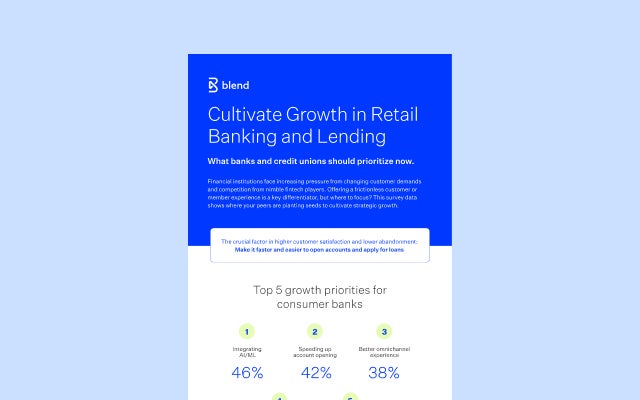April 16, 2021 in Thought leadership
What’s next? How the pandemic deemed digital transformation inadequate
Banking digital transformation was underway — then the pandemic hit. Explore an optimistic path for banks looking for increasingly nimble strategies.

Digital transformation has been on lenders’ minds for a while now, an imperative many are prioritizing. Digital experiences have become the norm, altering the competitive landscape at a rapid clip. But the pandemic has accelerated this shift to digital at a pace many didn’t think possible, encouraging banking leaders to rethink their strategies.
So, what can banks do to stay competitive now that digital transformation is table stakes? The panelists in our webinar, “Beyond digital transformation: The digitally agile bank,” gathered to unpack how you can pivot your current digital transformation efforts into a strategy for lasting digital agility.
Forrester Analyst Jost Hoppermann and Tom Bianco, senior vice president, head of innovation and commercial digital at Fifth Third Bank, joined Blend’s Head of Product Erik Wrobel to discuss the factors that have made digital agility more important than ever as well as what digital agility entails from their perspectives. Here is our take on the importance of implementing an agile technology architecture — and why we encourage lenders to act now.
Drivers supporting the move from digital transformation to digital agility
Transform banking, one email at a time
Subscribe for industry trends, product updates, and much more.
Before the pandemic, consumer expectations were already evolving quickly. Consumers started feeling empowered to demand what they want: simplicity and ease of use, efficient processes, and personalization, all of which are often facilitated by digital experiences. Add to this the rise of digitally native banks and the birth of new technologies, and banks were feeling the pressure to enact digital transformation to win new customers and keep their existing ones.
The pandemic, in many cases, made digital the only option, something many banks hadn’t prepared for. According to McKinsey, 6% of all US consumers had already opened a fintech account during the first six or so months of the crisis. It quickly became clear that it was no longer enough to go digital. Instead of being reactive to customer demands and market conditions, we learned that proactive strategies that aim to meet upcoming challenges and needs would now separate the leaders from the pack.
The Blend perspective on digital agility
We work to help our customers become digitally agile, and to do so successfully, we’ve developed a clear view on what it means. “Digital agility is the ability to use technology to thrive in a world with constant change,” declared Blend CEO Nima Ghamsari. Digital transformation implies a structural overhaul of your organization, whereas digital agility is “something that your teams can unlock with the right toolset,” according to Ghamsari. Agile organizations use technology as a tool to adapt in real-time.
What this translates to in practice is a unified, cloud-based platform that taps into industry best practices while providing lenders with the flexibility to modify and configure solutions as needed. Lenders use this modern framework to quickly bring best-in-class experiences to market for every line of business. We employ an extensive component library, ready-to-use product templates, and drag-and-drop workflow building to make replicating and scaling products and channels easy so you can capitalize on new opportunities and never be caught unprepared.
Hear from the experts
Curious to learn more about the digitally agile bank? The webinar panelists examined how banks’ priorities are changing amidst an ever-changing landscape. Listen in as they uncover best practices and approaches that have emerged over the past year, including the technologies leading banks are using to stay ahead.
Enjoy the full conversation
Find out what we're up to!
Subscribe to get Blend news, customer stories, events, and industry insights.


